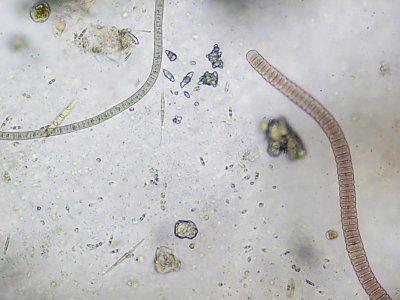Brew12
Electrical Gru
View BadgesExcellence Award
Reef Tank 365
Article Contributor
Moderator Emeritus
North Alabama Reef Club
Article Administrator
My Tank Thread
I finally have some cyanos and belive me , I have phosphates to spare.
I am sure cyanos will grow under various different conditions.
Food for thought.
We are discussing Cyanobacteria. This is a very broad classification of "blue green" bacteria. We try to group them into one large category, and there is some value in that. Not all of the cyano we encounter will play by the same rules. For instance, I referenced a study in the other thread that the "average" cyano N
Your experiences my contradict each other but that doesn't mean either is wrong. It could just be different strains of the same bacteria family.



















